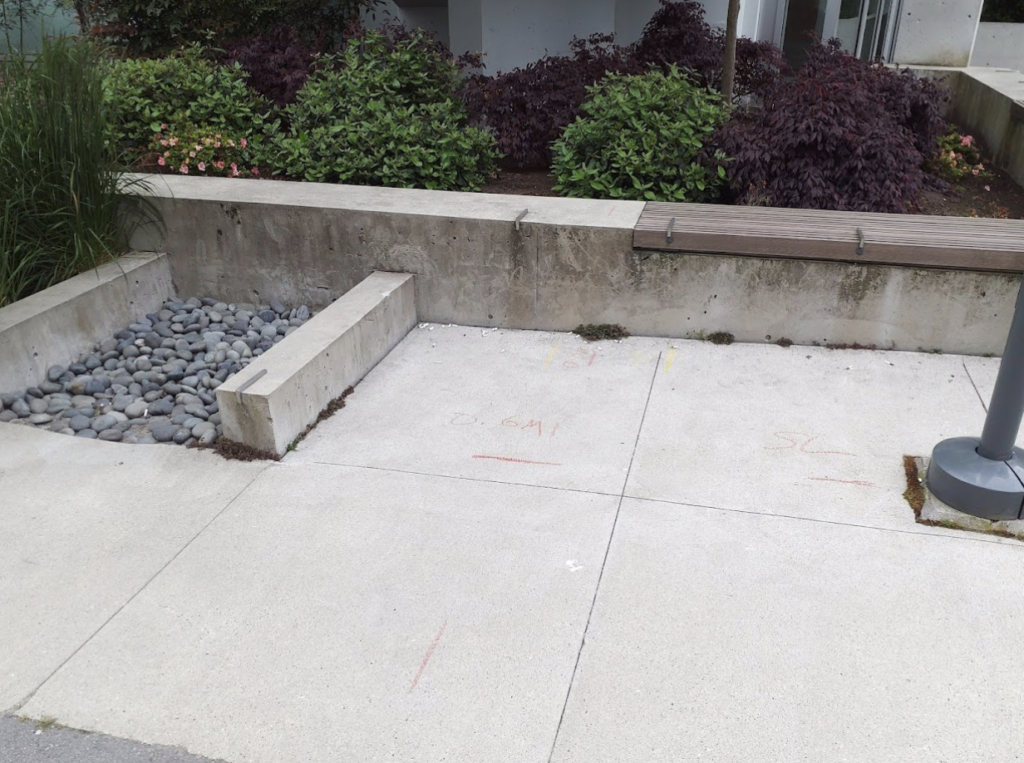It’s well known that underground utilities should be marked before starting a construction project.
However, weather conditions can bring many challenges maintaining and preserving the paint marks that indicate where specific underground utilities are located. This is why it is important the utility locator is choosing the right method of marking underground utilities to ensure that the markings are appropriate for the job.
These options include using one or a combination of the following:
Paint
Coloured paint is the industry standard that is used to indicate the location of an underground utility. Paint is quick to apply, bright and easy to include additional information such as the utility owner or depth. Yet, paint is susceptible to wash away with wet weather or heavy traffic. It can also stain surfaces where the marks may not be wanted such as decorative landscape features.

Flags
Coloured flags with metal rods can be used when additional visibility is required. Strong flags can last the duration of a project and can withstand wet or snowy weather conditions. They can be combined with coloured paint for an additional level of visibility. That being said, they can be removed or relocated easily, and cannot be used in hard surfaces or high traffic areas.

Chalk/Crayons
Chalk/crayons are used indoors or on sensitive areas where permanent markings are not desirable. They are less visible than paint, and can easily be washed away after a project is completed. However, it’s important to be sure the project is completed before the marks are gone.

Stakes
Wood stakes are a good method of marking utilities on large projects where greater visibility is needed. They stand taller and are more visible than other methods of marking such as flags and provide space to record additional information (such as utility depth or a station number). When a stake cannot be installed inline with the utility (such as in a roadway), offset stakes can be used to provide a distance and direction to the buried line. Stakes can become an obstacle for traffic on site, and also comes at an additional cost in both materials and time to the locator.

Nails with coloured ribbons/brushes
Nails with ribbon/brushes are ideal for projects with lots of hard surfaces or heavy traffic. They are very durable and withstand various weather conditions and heavy traffic. They can be installed in hard surfaces such as asphalt where flags or stakes cannot be used and paint or chalk may wash away. Nails are however more time consuming to install and may damage the surface.

Subsurface Utility Engineering (SUE)
Another option for recording utilities is Subsurface Utility Engineering (SUE). Once the locations of utilities are identified, they are then recorded using highly accurate survey equipment. SUE provides high-detail deliverables such as high quality PDF drawings and various CAD or GIS formats. Because the exact utility locations are recorded it is easier to maintain marks or remark utility locations. Additional information is also provided such as quality level C and D lines which are collected from available utility records (level D) and combined with surface feature locations (level C).
While SUE is more costly than a traditional locate, it has been proven to provide savings in the long term, especially on larger projects. Because the process for SUE is more time consuming, it is important to start the process early in a project. Find out more about SUE by attending our upcoming webinar.

Choosing the right method of marking underground utilities protects the service that the client is paying for. It prevents costly utility damages and helps ensure the safety of on-site workers and the general public. If you would like to further read about underground utilities and locates, browse our blog section for more educational articles.
